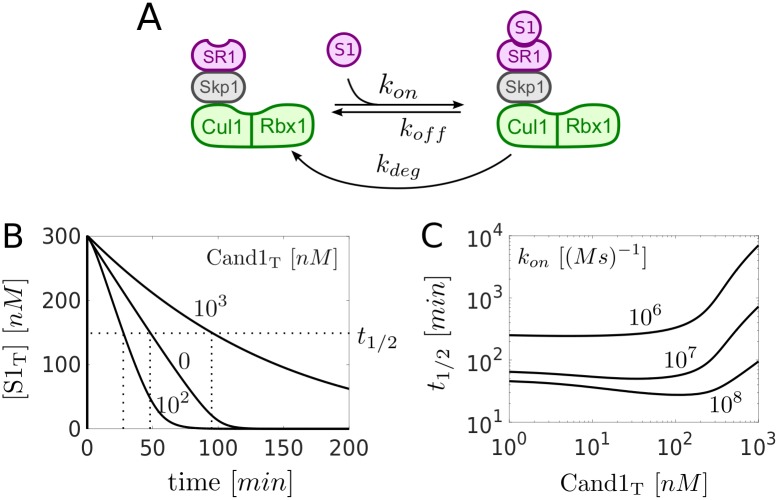Fig 3. Optimal Cand1 concentration.
A: Extension of the model depicted in Fig 1B. Substrate (S1) reversibly binds to Cul1.SR1. The substrate in the resulting Cul1.SR1.S1 complex is degraded with effective rate constant kdeg. B: Time courses showing the degradation of total substrate ST = [S1] + [Cul1.SR1.S1]. At t = 0 substrate (300nM) was added to a steady state mixture containing SR1T = 30nM, SR2T = 630nM and Cand1T as indicated. Note that t1/2 changes non-monotonically as a function of Cand1T. C: Half-life for substrate degradation (t1/2) as a function of Cand1T for decreasing binding affinity. As the association rate constant kon for substrate binding decreases t1/2 increases and the dependence of t1/2 on Cand1T becomes monotonic. Parameters for substrate binding: kon = 108M−1s−1, koff = 1s−1, kdeg = 0.004s−1. Parameters other than those mentioned are listed in Table 1.

